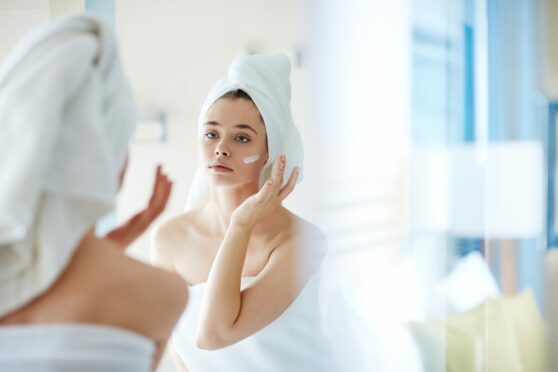
If you really want your skincare routine to work hard, it’s all about choosing the right combinations.
“Combining ingredients means you can treat and protect at the same time. This can increase the effectiveness, which will then deliver greater, faster results,” explains aesthetic oculoplastic surgeon Dr Sabrina Shah-Desai.
Whether you layer individual ingredients or choose an all-in-one is up to you. However, Shah-Desai urges you to make sure “the formulations are compatible and do not negate each other or irritate or aggravate skin”.
If you’re looking to boost the effectiveness of your skincare routine, these ingredient combinations are a match made in heaven…
Niacinamide and salicylic acid
“Both of these ingredients have anti-ageing and anti-acne effects,” says Shah-Desai.
Vitamins C and E
“When combined together, Vitamin C and E enhance the effects of each other and give fantastic results,” explains Shah-Desai.
“When applied topically, vitamin C is a powerful skin booster. It improves the appearance of your skin by reducing fine lines and wrinkles, repairs damage done by UV rays, stabilises collagen and gives dull skin a luminous glow.
“Vitamin E is a fat-soluble antioxidant that has anti-inflammatory properties, and combats free radical damage by preventing oxidative damage to cells.”
Retinol and hyaluronic acid
Retinol is a powerful ingredient beloved by beauty buffs for reducing the appearance of fine lines, but it also comes with its issues – namely, the dreaded “retinol uglies”, when your skin reacts negatively to the product.
Potential side effects of retinol include “redness, irritation and dry skin”, says Shah-Desai.
That’s why she likes layering hers with hyaluronic acid, saying it “helps lessen the potential side effects. “Hyaluronic acid is renowned for its ability to hydrate the skin, it helps the skin hold on to water, which hydrates the outer layers of the skin.”
SPF and Vitamin C
Applying vitamin C before SPF in the morning is a genius idea, according to Shah-Desai, as it “will help protect the skin from UV and free radical damage.
“Vitamin C helps reduce fine lines and wrinkles, slows down skin ageing and reduces the appearance of brown spots.”
The order is important – make sure you apply vitamin C first, “to get the best benefits of these products combined,” she adds.

Enjoy the convenience of having The Sunday Post delivered as a digital ePaper straight to your smartphone, tablet or computer.
Subscribe for only £5.49 a month and enjoy all the benefits of the printed paper as a digital replica.
Subscribe © Press Association Images
© Press Association Images